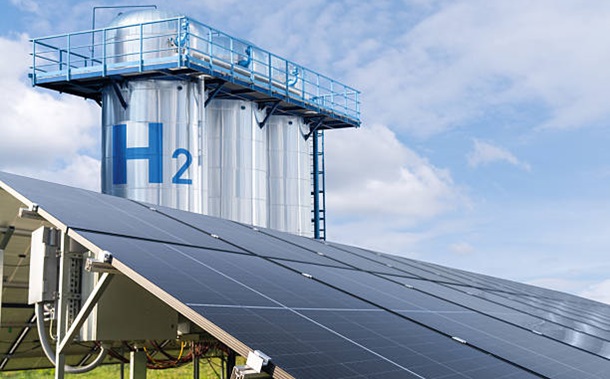Alternative Method for Calculating Service Level Agreements for Internet Access Services in Rural Areas
Downloads
Indonesia faces significant challenges in providing equitable internet access, particularly in remote areas. To address these challenges, the government collaborates with private Internet Service Providers (ISPs) under Service Level Agreements (SLAs) that define key service metrics, such as uptime and response time. Network Management System A (NMS A), managed by the government, handles telecommunications infrastructure, while NMS B, operated by the private ISP, delivers the internet services. A critical challenge in assessing SLA performance is distinguishing between service disruptions caused by network issues and those caused by power outages. This study proposes an SLA calculation method that prioritizes uptime data from NMS A, reflecting the government's perspective. If NMS A’s data is unavailable, UPS data is used as an alternative. NMS B’s data is considered only if its correlation with NMS A is strong (≥0.6). Additionally, the study classifies downtime: link failures exceeding 300 seconds require compensation (restitution). Downtime less than or equal to 300 seconds is considered non-restitution, and no compensation is needed. Power outages are considered non-restitution events, as they stem from external factors beyond the service provider's control. This method has been tested in over 1,000 locations, proving its reliability and adaptability for fair, transparent SLA evaluations.
Downloads
[1] Wahida Suddin, Muh Akbar, & Nur Riswandi Marsuki. (2024). Digital Access Equality. Jurnal Kajian Dan Penelitian Umum, 2(1), 159–168. doi:10.47861/jkpu-nalanda.v2i1.858. (In Indonesian).
[2] Insani, K., & Alijoyo, F. A. (2024). Fiber Optic Internet Network Business in the Digitalization Era for Equal Distribution of Telecommunication Infrastructure. Jurnal Teknologi Dan Sistem Informasi Bisnis, 6(4), 799–805. doi:10.47233/jteksis.v6i4.1572. (In Indonesian).
[3] KOMDIGI. (2024). Increase the Connectivity of 3T Regions, Kominfo Review Optimizes 5G. Press Release No. 652/HM/KOMINFO/10/2024, Ministry of Communication and Digital of the Republic of Indonesia, Jakarta, Indonesia. Available online: https://www.komdigi.go.id/berita/pengumuman/detail/tingkatkan-konektivitas-daerah-3t-kominfo-kaji-optimalkan-5g (accessed on July 2025). (In Indonesian).
[4] Rohani, H., & Roosta, A. K. (2014). Calculating total system availability. Information Services Organization, Amsterdam, Netherlands.
[5] Saad, S. B., Ksentini, A., & Brik, B. (2021). A Trust architecture for the SLA management in 5G networks. ICC 2021 - IEEE International Conference on Communications, 1–6. doi:10.1109/icc42927.2021.9500990.
[6] Husna, A., & Budiman, L. (2024). Connecting the Unconnected: Lessons for Improving Fast and Reliable Internet from Southwest Sumba Regency. (In Indonesian).
[7] Stephanie, S., Ayumi, A., Fayola, A., Darianty, R., & Maulana, A. (2024). Implementation and Impacts of ITIL Service Operation Within The Telecommunication Industry. International Journal of Computer Science and Information Technology, 1(1), 31–40. doi:10.55123/ijisit.v1i1.22.
[8] Tijas, R. A., & Saputra, A. (2022). Legal Protection of Internet Service Providers Against Bandwidth Misuse in Home Idplay Products. Legal Standing: Jurnal Ilmu Hukum, 7(1), 14–22. doi:10.24269/ls.v7i1.5605. (In Indonesian).
[9] Darussalam, M. G. B., Fauzi, A., Suranegara, M. G., & Lestariningsih, D. W. (2024). Analysis of Fiber Cut Transmission Disturbances and Solution Development to Increase the Availability of the Fiber Optic Communication System in the Banua Hanyar – Bati Bati Section. Ranah Research: Journal of Multidisciplinary Research and Development, 6(3), 374–388. doi:10.38035/rrj.v6i3.828. (In Indonesian).
[10] Sekhi, I. (2023). Selecting the SLA guarantee by evaluating the QOS availability. Multidiszciplináris Tudományok, 13(4), 80–102. doi:10.35925/j.multi.2023.4.8.
[11] Damanik, H. A. (2021). Securing Data Network for Growing Business VPN architectures Cellular Network Connectivity. RSF Conference Series: Engineering and Technology, 1(2), 14–20. doi:10.31098/cset.v1i2.470.
[12] Telkom University. (2025). Service Level Agreement (SLA): Internet Service Quality Assurance. Telkom University, Jakarta, Indonesia. Available online: https://jakarta.telkomuniversity.ac.id/service-level-agreement-sla-jaminan-kualitas-layanan-internet/ (accessed on July 2025). (In Indonesian).
[13] Li, J., & Bai, Z. (2022). Downtime Distribution, Risk Volatility, and Optimal Backup VMs Allocation in Cloud Services. Procedia Computer Science, 214, 991–998. doi:10.1016/j.procs.2022.11.269.
[14] Pratiwi, P. E., Isnawati, A. F., & Hikmaturokhman, A. (2013). QoS Analysis on Multi-Protocol Label Switching (MPLS) Network: Case Study at Pelabuhan Indonesia III, Tanjung Intan Branch, Cilacap. Purwokerto: Akatel Sandhy Putra Purwokerto. (In Indonesian).
[15] Arisyakbani, A. (2010). Analysis of Service Level Agreement (SLA) Parameters on PT Telkom's Metro Ethernet Service for Telkomsel Wireless Broadband (3G) from Widya Chandra Apartment to STO Semanggi 2 with RNC at Wisma Mulia, 4th Floor. Universitas Indonesia, Depok, Indonesia. (In Indonesian).
[16] SolarWinds Worldwide. (2016). Quick Tip: Mitigate Network Downtime by Monitoring CPU Load in Real-Time. SolarWinds Worldwide Texas, United States. Available Online: https://content.solarwinds.com/creative/pdf/techtips/mitigate_network_ bottlenecks_by_monitoring_cpu_load_spikes_in_real-time.pdf (accessed on July 2025).
[17] Ministry of Communication and Digital of the Republic of Indonesia. (2023). baktikomdigi Ministry of Communications and Digital, Jakarta, Indonesia. Available: https://baktikomdigi.id/layanan/bakti-aksi (accessed on July 2025). (In Indonesian).
[18] Meghanathan, N. (2016). Assortativity Analysis of Real-World Network Graphs based on Centrality Metrics. Computer and Information Science, 9(3), 7. doi:10.5539/cis.v9n3p7.
[19] Samuels, C. I., Syambas, N. R., Hendrawan, Edward, I. J. M., Iskandar, & Shalannanda, W. (2017). Service level measurement based on Uptime data monitoring for rural internet access services in Indonesia. 2017 11th International Conference on Telecommunication Systems Services and Applications (TSSA), 1–5. doi:10.1109/tssa.2017.8272951.
[20] Paessler GmbH. PRTG Manual: Historic Data Reports. Paessler GmbH, Nuremberg, Germany. Available online: https://www.paessler.com/manuals/prtg/historic_data_reports (accessed on July 2025).
- This work (including HTML and PDF Files) is licensed under a Creative Commons Attribution 4.0 International License.




















